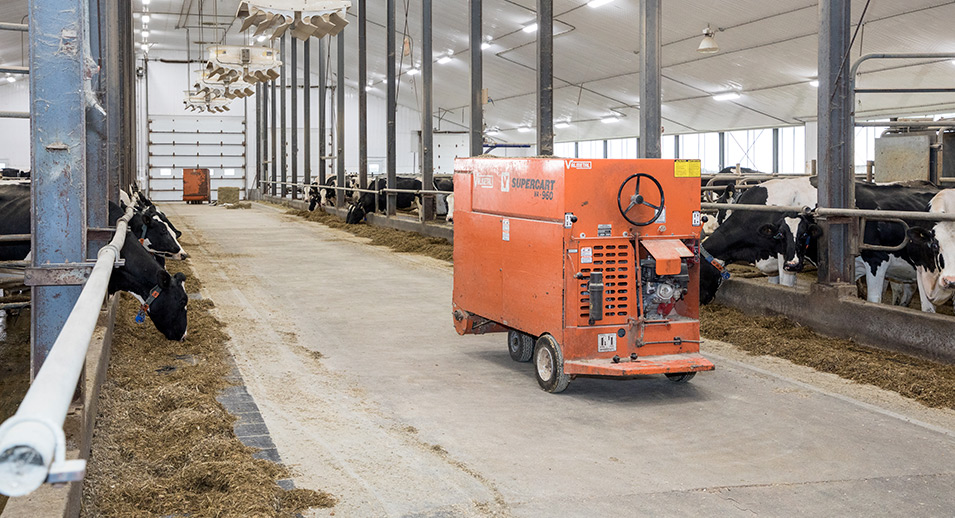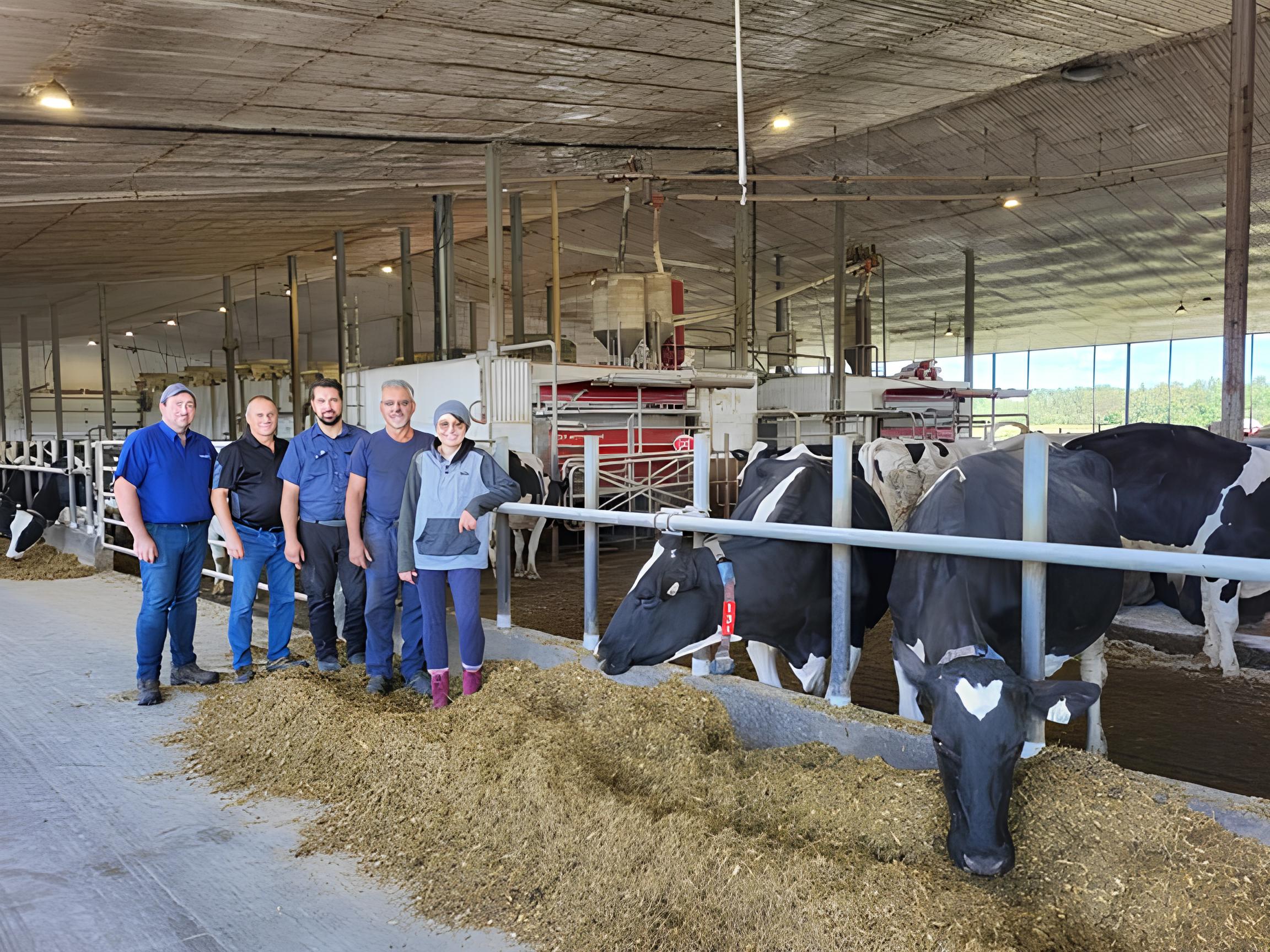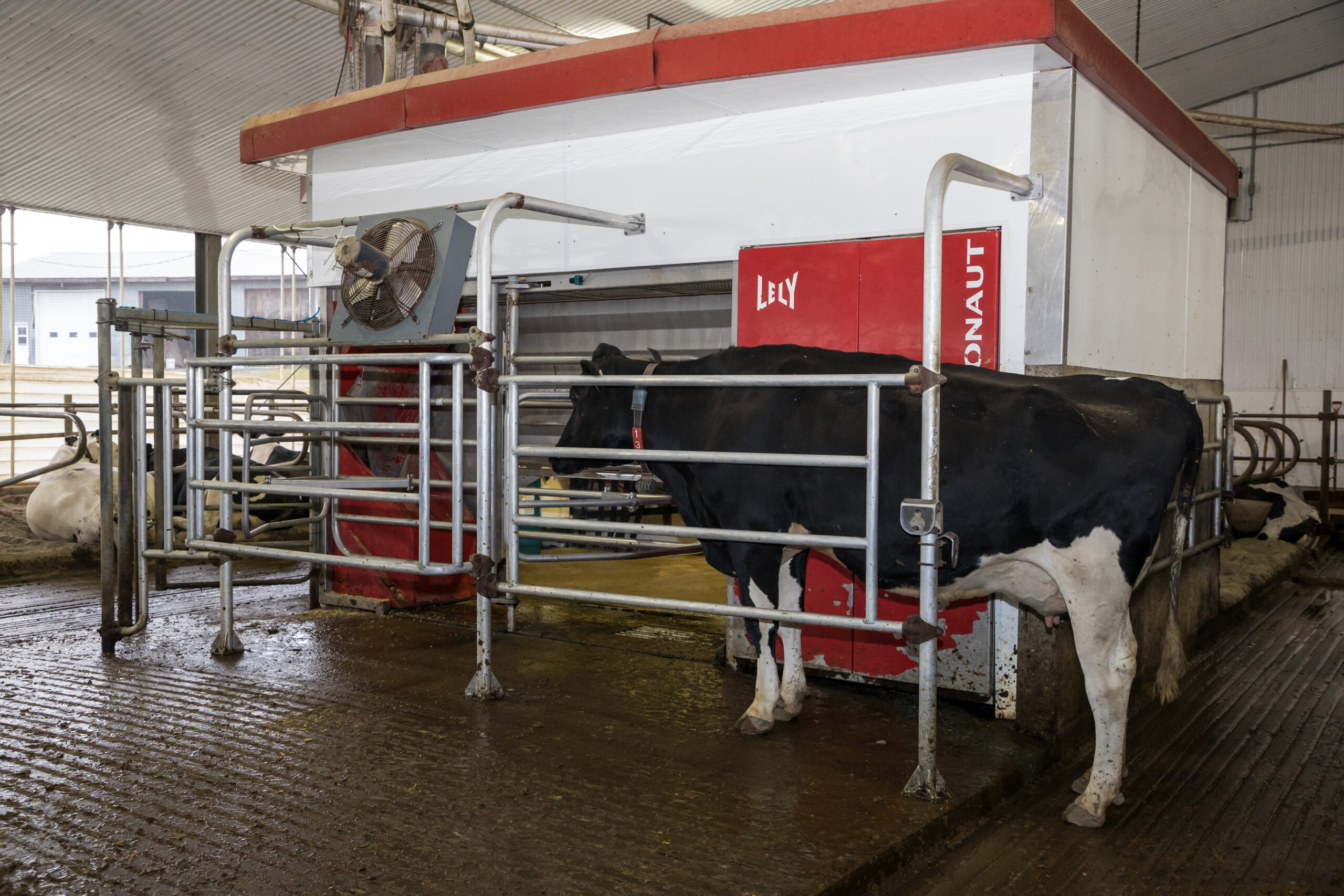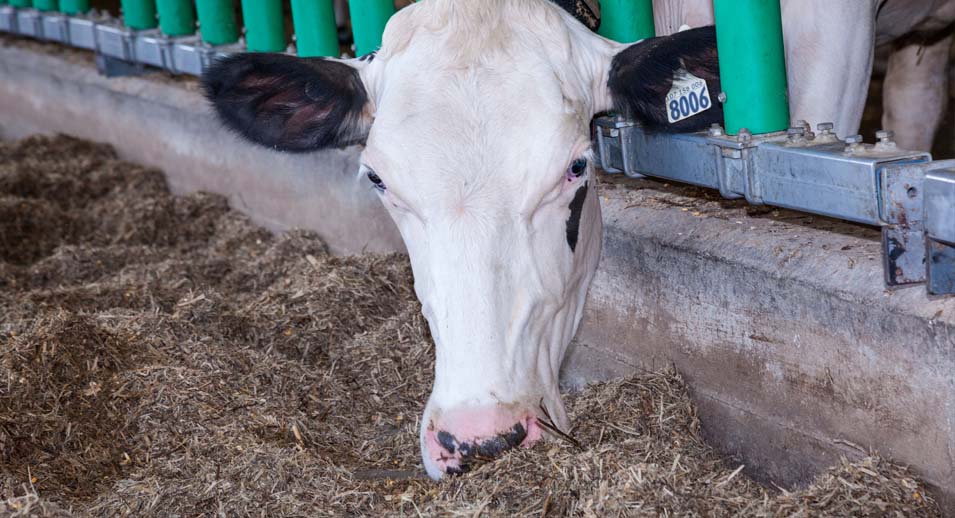A Peak in Robot Concentrate Costs
- July 19, 2021
The 105 Holstein robot farms that participated in our “Mastering Feed Costs” workshops in the winter of 2021, provided a snapshot of their margin over feed costs in January and February of 2021.

There was a lot of variation between farms in terms of concentrates, since each has their own recipes and concentrate prices. Some producers made the choice in the fall of 2020 to close prices on soybean meal, whereas others worked with the daily price between January and March 2021 when there were variations of more than $100/ton.
Their feed rations also influenced their results. Rations with a lot of corn silage require significant amounts of soybean meal or supplement, feeds that were very expensive in the winter of 2021.
What were the results?
| Robot Average | Top 20% | Top 20% | Top 20% | |
(January and February 2021) 105 farms | Margin over concentrate costs/hectolitre (hl) | Margin over concentrate costs/kilo (kg) fat | Margin over concentrate costs/cow | |
| Milk Prod. (milk/cow/day) | 34.2 | 33.2 | 34.0 | 37.4 |
| Fat (kg/cow milk/day) | 1.43 | 1.42 | 1.41 | 1.56 |
| Protein (kg/cow milk/day) | 1.12 | 1.10 | 1.12 | 1.23 |
| Fat (kg/hl) | 4.19 | 4.29 | 4.14 | 4.16 |
| Protein (kg/hl) | 3.27 | 3.33 | 3.30 | 3.29 |
| SNF/F Ratio | 2.20 | 2.16 | 2.23 | 2.22 |
| Results: $/hl | ||||
| Milk Value | 82.03 | 83.73 | 81.74 | 81.97 |
| Cost of Concentrates | 15.31 | 12.52 | 11.90 | 14.27 |
| Margin over Conc. Costs | 62.25 | 66.74 | 65.37 | 63.23 |
| Results: $/kg | ||||
| Milk Value | 19.61 | 19.54 | 19.74 | 19.70 |
| Cost of Concentrates | 3.66 | 2.92 | 2.88 | 3.43 |
| Margin over Conc. Costs | 14.88 | 15.57 | 15.78 | 15.19 |
| Results: $/cow | ||||
| Milk Value | 28.28 | 28.01 | 27.86 | 31.01 |
| Cost of Concentrates | 5.28 | 4.20 | 4.06 | 5.44 |
| Margin over Conc. Costs | 21.46 | 22.32 | 22.28 | 23.88 |
| Results: Indicators | ||||
| Concentrate Costs ($/t) | 536 | 496 | 504 | 534 |
| Milk/Conc. Ratio (kg) | 3.71 | 4.12 | 4.38 | 3.93 |
These are the results from the top 20% of producers, for the three margins that we looked at in the workshop in the winter of 2021: margin over cost of concentrates per hl, per kg fat and per cow. The results are quite similar for margin over concentrate costs per hl and margin over concentrate costs per kg fat. Nor are there many differences in the productivity of herds and both produce the same amount of fat per cow. Therefore, the same number of cows are required to produce the quota.
The top 20% group according to margin over cost of concentrates per cow is the group with the best productivity. Evidently, the margins per hl and per kg fat are lower than the other two groups. However, for the same amount of quota, this group requires less cows than the other two groups to produce their quota and save on variable expenses.
Defining Feed Cost Objectives
The producers generally wanted to have an overall assessment of their farm versus the provincial average. Many also wanted to have more details about the concentrates that they used. Here are some of their questions:
Am I paying too much for my robot feed? Is the cost per hl high because I am feeding too much? What do the averages look like? Do my concentrates for protein cost too much?
Here are some of the averages that we took from the farm’s feed tables. It is also important to remember that the cost/ton (t) and the amounts fed influence the cost/hl of feed.
Feeds Used | Price ($/t) | Cost ($/hl) |
Grains (dry corn, high moisture corn, barley, wheat, etc.) | 256 | 2.42 |
Robot feeds | 489 | 5.91 |
Proteins (commercial supplements, by-products, soybean meal, urea) | 772 | 5.83 |
Soybean meal | 652 | 2.66 |
Urea | 833 | 0.17 |
Start-up supplement (glycerol feed, chromium, sugar, etc.) | 1,413 | 0.70 |
Fat (all types of fat) | 1,849 | 1.29 |
Minerals (commercial and personalized) | 1,207 | 1.64 |
Minerals + basics (bicarb, salt, limestone, antitoxins, etc.) |
| 1.87 |
Most of the farms used grains in their feeding program and the quantities fed were variable. Less grains were being used in rations with a significant amount of corn silage versus the rations that do not. The robot feed is definitely of interest, because almost all of the farms are using it. Price variations are not as large as we would have thought. The average variation is $57/t. We can say that $6/hl and below is a good target for robot feed.
The average cost of feeds that supply protein is similar to the robot feeds and the objective would be to aim for an average cost of $6/hl or less. This target can certainly be more difficult to reach for producers that use corn silage.
Many of the farms, around 36%, use a start-up feed that contains glycerol, chromium, sugar, or energy. This strategy can be helpful in cases where there are several cows with clinical or subclinical ketosis. We also know that robots promote a rapid start in milk and the prevalence of ketosis is 1.4 x higher than with other milking systems. Therefore, targeting $0.70 /hl is an effective strategy because it decreases ketosis rates and can result in reaching higher milk peaks. This strategy must be evaluated on two levels: milk production and herd health.
Numerous farms used feeds that contain fat to meet energy needs and the average cost was $1.29 /hl. The average cost of commercial minerals and personalized formulas was $1.64 /hl. Many farms also used mineral bases such as bicarbonate, limestone, salt, antitoxins and others. When you add the cost of these commercial mineral bases, the average cost amounts to $1.87 /hl to meet the total mineral needs.
Some farms choose not to buy bagged minerals or not to mix their own minerals and instead opt to include minerals in their bulk supplement. They should aim for a lower average cost of $7.70 /hl ($5.83 /hl +$1.87 /hl) for combinations of protein and minerals in the same feed.
2021 Costs: An Unusual Start to the Year
These costs were from a period when the price of concentrates was very high. Hopefully, costs will return to more normal levels, at which point we will need to be more demanding about objective feed costs.
Thank you to the producers who participated in these meetings and who shared the cost of concentrates with us.












